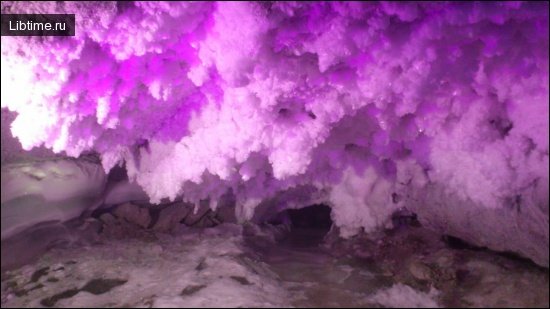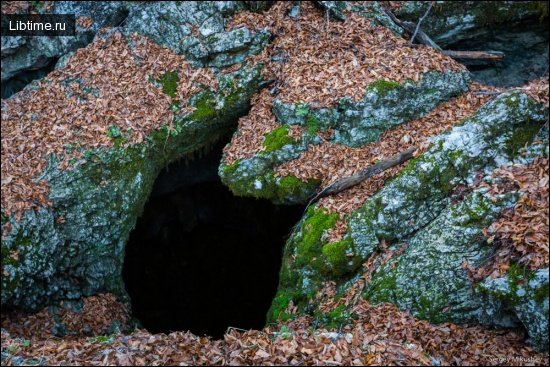Calcite crust
Calcite crust is usually formed at the base of the walls where water that has seeped into the cave flows down. Its surface, as a rule, is uneven, bumpy, sometimes resembling wave ripples.
The thickness of calcite crust in some cases exceeds 0.5 meters. 
Fusing with each other, these crystals form first a thin film floating on the water surface in the form of separate spots, and then a solid film of calcite, covering the entire lake, like an ice cover.
On lakes spurred by gourami, the formation of the film begins from the shores. Gradually growing, the film occupies the entire water surface. The thickness of the film is small.
It varies from a few tenths of a millimeter to 0.5 cm or more. If the lake level drops, a space may form between the water surface and the film. Calcite films are predominantly seasonal in nature.
They occur during dry periods when the lake water has a high concentration of calcium and hydrocarbonate ions. When abundant rain and snow melt water enters the cave, calcite films on the surface of underground lakes are destroyed.
According to L. S. Kuznetsova and P. N. Chirvinsky (1951), calcite film is a mosaic of grains 0.05-0.1 mm across. The orientation of the grains is disorderly. According to the character of coloration they are divided into two groups.
Some, brownish and turbid, are slightly translucent, while others, colorless, more transparent, appear fibrous. Regarding the mineralogical composition, both groups of grains are represented by pure calcium carbonate. The upper surface of the crust under the microscope is knobby, while the lower surface is completely smooth.
Along with calcite films on the surface of lakes there are also gypsum films. They like transparent ice cover not only the water surface of the lake, but also its clay shores. Such a film can be seen, in particular, on the surface of the lakes of the Kungur ice cave.


